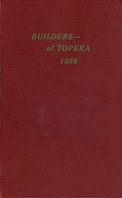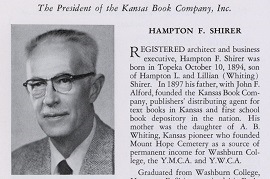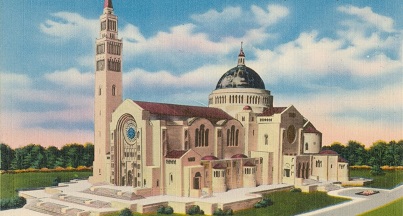
|
Rev. Daniel Gurley Shirer |
Rev. Daniel Gurley Shirer was born on April 16, 1837 in Adams Township, Muskingum County, OH, the son of Valentine and Hester "Esther" (Gaumer) Shirer Jr.
He stood 6 feet, 2 inches tall, and weighed 170 lbs. with a dark complexion, dark hair and blue eyes. He was a longtime clergyman of the Methodist Protestant Church.
Daniel was twice married. His first spouse was 18-year-old Cordelia Maria King 1842-1891), whom he wed on March 22, 1860. She was the daughter of George and Elizabeth (Drummond) King. Their two known children were Hampton L. Shirer and Harlan Jay Shirer.
The federal census of 1860 shows the newlyweds living in Adams Township.
During the Civil War, on Feb. 26, 1864, Daniel traveled to Newark, OH to join the 62nd Ohio Infantry, Company F. He was promoted to corporal of his company. He received his honorable discharge at City Point, VA on Aug. 23, 1865, having served for 18 months.
Circa 1883, he was pastor of the Methodist Protestant Church in Waterloo Township, Muskingum County, OH, and is mentioned in the book History of Hocking Valley, Ohio. The text says that membership at the time was 52 and "is at this time growing stronger." Daniel served as pastor of a Methodist church in Pleasantville, Fairfield County, OH circa 1880. In 1882, he was named in the book The Household Guide and Instructor, with Biographies: History of Guernsey County, Ohio. He relocated to Kansas, and in 1888 was in Wichita, Sedgwick County. J.C. Sirvis, M.D., knew Daniel during his years in Kansas and said he was "a strictly moral man in all things." In September 1891, Daniel left an assignment at Spring Hill, Johnson County to a new Methodist Protestant Church pastorate in North Ottawa, Franklin County, KS.
Around that time, Cordelia learned that her parents were dangerously sick back home in Dresden, Ohio, and she returned to see them, only to take ill herself and die on Oct. 16, 1891. Burial was in Prospect Methodist Church Cemetery in Dresden, Muskingum County. News of her death was printed in Daniel's local newspaper, the Ottawa (KS) Daily Republic.
At Thanksgiving 1891, after just a month as a widower, Daniel preached on Thanksgiving Day on the topic of "Elements of National Greatness and Strength." He often penned other church updates that were published in the Daily Republic. His church in North Ottawa hosted the first annual convention of the Young People's Society of Christian Endeavor of the Methodist Protestant church of the Kansas Conference in May 1893, and Daniel provided remarks of welcome. On Leap Day 1892, Daniel was awarded a military pension for his wartime service. [Invalid App. #1.095.174 - Cert. #887.347] He claimed that he suffered from heart and bladder problems, catarrh (mucus of the nose and throat) and fistula (rectum infection). Circa 1894, Daniel was in Fort Scott, Bourbon County, KS and also in Topeka, Shawnee County, and by July 1898 had moved to Argonia, Sumner County.
He married again, at the age of 59, on Aug. 27, 1896, to 41-year-old Ohio native Ida McCoy (1855-1925), the daughter of Lewis and Judith (Nessly) McCoy. It was Ida's first marriage, and at the time, she made her home in Rochester, Beaver County, PA. The ceremony was held at Wichita and performed by Rev. G.W. Saunders. Daniel and Ida eventually relocated to southwestern Pennsylvania and in 1903 dwelled in Rochester. By 1906 they made their home across the state line in Chester, Hancock County, WV but moved back to Rochester, where they made their home at 490 Connecticut Avenue in the 2nd Ward.
There, at the age of 73, and suffering from chronic cystitis, Daniel died on Jan. 15, 1911. Among those attending his funeral were Martin Eckelberry and T.O. King. His body was sent to Dresden, OH for burial.
Ida then went to live with her sister and brother in law, Olive and Stanley Mahan in Rochester at 460 Connecticut Avenue. In April 1916, she began to receive her late husband's pension. [Widow App. #1.075.467 - Cert. #819.947]. The amount of the payments each month was $30. While in Rochester, Ida joined the Rochester Free Methodist Church. The Beaver Falls (PA) Tribune once said she was "a licensed evangelist of the Pittsburgh conference." She suffered a paralyzing stroke and was an invalid for several years.
She died in her sister's home at the age of 70 on Jan. 13, 1925. Her remains were transported to Brownsdale, WV for interment in the Nessly Chapel Cemetery. An obituary in the Pittsburgh Press said she was survived by two brothers, William Baum McCoy and John J. McCoy. [Find-a-Grave]
~ Son Hampton L. Shirer ~
 |
Builders of Topeka 1956 |
Son Hampton L. Shirer (1861-1940) was born on Jan. 7, 1861 in Ohio.
In his 20s, Hampton relocated to Kansas with his parents during the decade of the 1880s, where he eventually resided in Topeka.
In about 1890, at the age of 29, Hampton married 22-year-old Kansas native Lillian B. Whiting (1868-1951), daughter of A.B. Whiting, said to have founded the Mount Hope Cemetery in Topeka as a permanent source of funding for Washburn College, the YMCA and YWCA.
The Shirers produced two children -- Mary H. Lee and Hampton Francis Shirer.
Circa 1891, he was employed as secretary by the T.J. Kellam Book and Stationery Company in Topeka and in 1897, working with John F. Alford, founded the Kansas Book Company which he ran for the rest of his life. The book Builders of Topeka 1956 states that the company served as "publishers' distributing agent for text books in Kansas and [was the] first school book depository in the nation."
He also was a renowned singer and once was called "the leading tenor of the west."
In December 1893, he helped organized a ladies' quartet concert at Lukens Opera House to benefit the Grand Army of the Republic, a Civil War veterans' organization.Then in April 1896, he is known to have performed at the Rohrbaugh theater in Topeka. The family enjoyed camping and made annual trips to Centennial, WY.
He died on March 16, 1940, with burial in Mount Hope Cemetery in Topeka. [Find-a-Grave]
Daughter Mary H. Shirer ( ? - ? ) married Amory Lee ( ? - ? ). Circa April 1918, the Lees lived in New York, with Mary employed in wartime censorship.
Son Hampton Francis Shirer (1894-1977) was born on Oct. 10, 1894 in Topeka. As a boy of 11, his poem "In the Forest" was published in St. Nicholas magazine. He was tall and of medium build, with blue eyes and brown hair. He attended the Washburn School of Engineering and helped design and construct sets for collegiate plays in Topeka. "While in Washburn he had charge of the college shop and at one time made with the tools and equipment available an automobile which would really run," said the Topeka Daily Capital. He then went on to study architecture at the Boston School of Technology. During World War I, he lived at 1157 Fillmore in Topeka but underwent training for Red Cross ambulance service in France. He was promoted to sergeant at the training camp in Allentown, PA, and was in charge of specialized mechanical services, including training soldiers how to repair their equipment in the dark. On May 20, 1917, he was united in matrimony with 24-year-old Pauline Haynes (1894-1975), an instructor in Parsons Art School in New York, with the ceremony taking place in Topeka, where both were members of the Topeka Art Guild. Pauline was an artist in her own right which included etchings, monotypes, decorated lacquer and glassware. The couple produced two known offspring, Sarah Elizabeth Shirer (born 1920) and Hampton W. Shirer (1925). After the war, Hampton returned to his studies at Boston Polytechnic. They made their home in Wellesley, Norfolk County, MA. Hampton is credited with the architectural design of the Wellesley Hills Branch Public Library circa 1928. He spent seven years with the Boston firm of Maginnis and Walsh and was involved with design of the National Shrine of the Immaculate Conception in Washington, DC. In 1937, they returned to Topeka. When his father died, Hampton assumed his position as president of the Kansas Book Company. Circa March 1953 to June 1955, he returned to Washington to be in charge of the shrine's working drawings. Their home address in 1956 was 105 Greenwood Avenue and his office at 911 Adams Street. His portfolio of accomplishments also includes design and construction of mechanical devices for the research division of the Christian Science Maintenance Department. He became a trustee of Washburn College and was a member of the American Institute of Architects, Saturday Night Literary Club, Wellesley Society of Artists, Mulvane Art Center, Topeka Guild, Topeka Camera Club, the Fan Guild of Boston and the National Fire Protection Association. As a photographer, in July 1973, Hampton's works were among a traveling exhibition curated by the University of Kansas under the name "The Perceptive Eye." Pauline died in Topeka on Sept. 12, 1975. She is profiled in the book Biographical Dictionary of Kansas Artists. Hampton survived her by two years and died on July 3, 1977. Burial was in Mount Hope Cemetery in Topeka. Their daughter Elizabeth married (?) MacNeil and their son Hampton was assistant professor and research associate in biophysics at the University of Kansas circa 1956.
 |
| Above: Hampton's profile, Builders of Topeka 1956. Below: his project, the National Shrine of the Immaculate Conception |
|
~ Son Harlan Jay Shirer ~
Son Harlan Jay Shirer (1863- ? ) was born on Jan. 19, 1863 in Ohio.
Nothing more about his life is known at present.
Copyright © 2000, 2006,
2011, 2015-2017, 2020-2022 Mark A.
Miner
Minerd.com is grateful for records
compiled by Corinna (Leydig) Talbot, Elsa Bernice Haupt, Mary Louise (Priddy) Shirer, Gilbert R. Gaumer, Paul K. Gaumer, Mary L. Shirer, the Shirer Genealogy Project, Somerset (PA) Historical Center and National Archives in the
preparation of this and the Daniel Gaumer Sr. family biographies.
